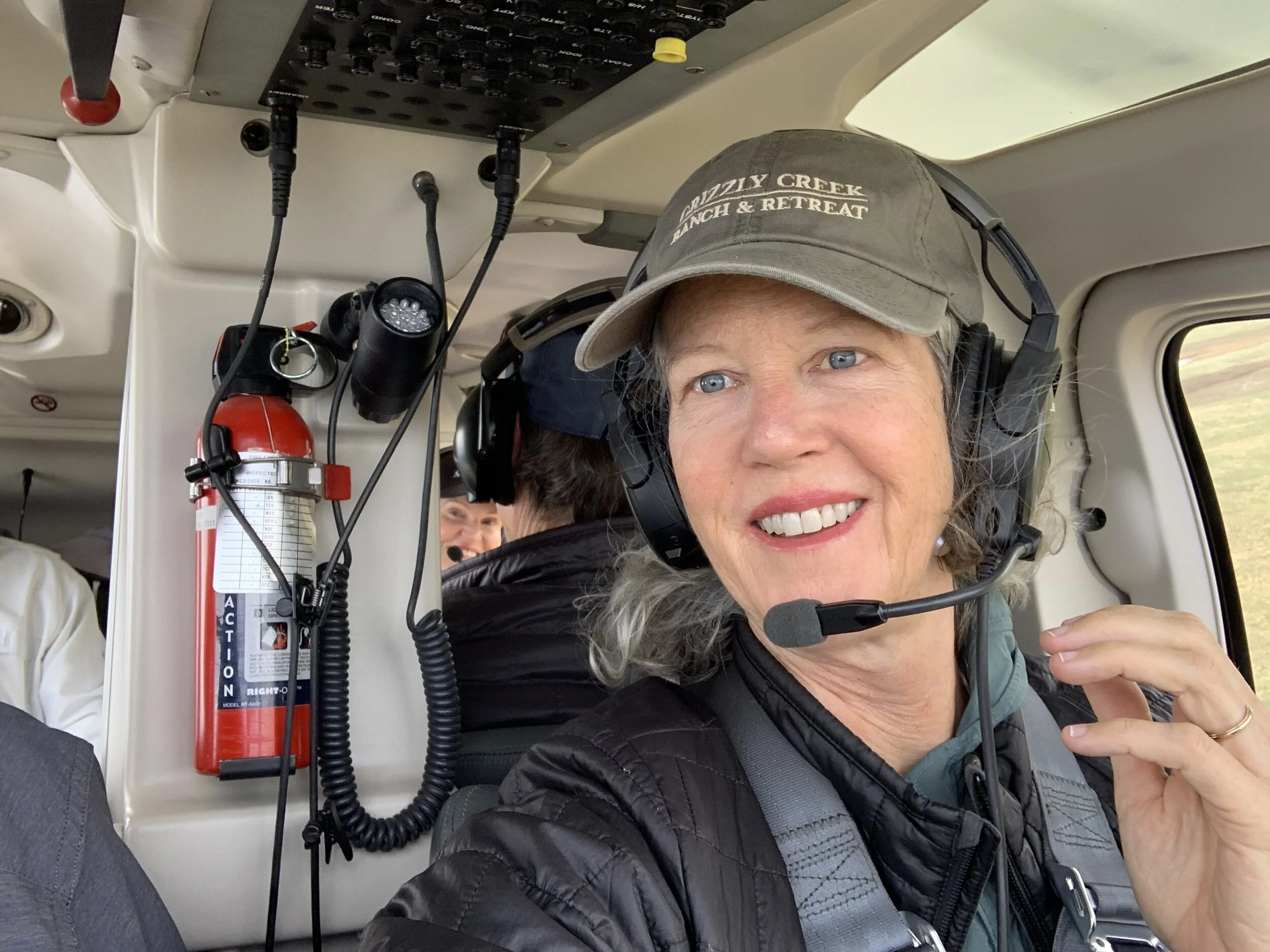New perspectives (or, my recent visit to Yellowstone)
This blog post was originally shared via my email newsletter.
To receive essays like this in your inbox so you don’t miss a beat, please sign up here.
When I planned a trip to my girlfriend’s ranch bordering the national wilderness of Montana, I imagined lots of hikes, quiet, and communing with nature. So when she and her partner suggested a helicopter ride over Yellowstone Park, I had a strong negative reaction that took me by surprise, “No!” Aerial game hunting came to mind… A disconnected vantage point from nature that wouldn’t serve my desire to feel the wilderness, which was my hope. Plus, as an environmental advocate I could not justify that level of carbon burn just to view Mother Nature. I felt the conflict.
But after hearing about the crowds and traffic jams in the park, as well as considering that my partner’s touchy back would not allow for the many hours in the car, I reconsidered.
Not being a huge fan of flying in general, I was reassured when I met the pilot, a local veteran of aircraft flying and mechanics, who pilots nature photographers and National Geographic documentary makers for a living. They gave me the front seat, and I must say my initial response was absolute thrill and wonder as we lifted off and began to move across the vast green landscape.
Moving into the park, we soon saw small groups of antelope grazing on plateaus, shaggy white mountain goats nimbly bounding up steep craggy granite, and our first glimpses of the many bison in the parkland. Next to amaze me was a series of crystal-clear lakes with dense thickets of trees bordering their untouched shores.
I had many questions for our pilot Troy, like “What happened to this large swath of dead, gray trees? Was it fire?” He explained that the forest service initially had put fires out when lightning struck the old growth, however this left much dry kindling, and only encouraged future fires to rage longer. Now they allow them to burn, as they have done historically, a part of their life cycle and the way many plants and trees propagate. The other reason for loss of trees, he explained, and one that left an orange tinge on the carcasses, is from the Mountain Pine beetle that has been attacking the trees in recent years due to a shorter freeze period, a direct result of climate change.
And on we went, deeper and deeper into vast wilderness as far as the eye could see in all directions. Suddenly I felt a sense of what this territory must have been like 200 years ago, as I attempted to grasp the scale of the wilderness encountered by those who dared to venture across this rugged, pristine territory. I had never felt the impact of such vastness, and it stretched my imagination far beyond what I normally consider "nature." I felt immense gratitude for those who had the foresight to preserve parklands, with Yellowstone being the first in 1872, long before our human sprawl would tip the balance of our ecosystem and threaten all living things.
Approaching the Teton Range, a 40-mile stretch of peaks that had wowed me as a 17-year-old in the backseat of our family station wagon, got me on the edge of my seat. The mountains are a dramatic yet concise bit of geological marvel rising straight out of Leigh, String, and Jenny Lakes to about 13,000 feet. Our chopper slowly climbed up inside their craggy peaks, still shrouded in patches of snow. I was totally transported, so I didn’t even notice that the rest of the passengers were a bit terrified by the thin air and blustery wind buffeting us about! Moving over the top, the pilot explained the pinkish red veins running through the snow, called glacier blood or watermelon snow, which is a form of algae that is currently a global phenomenon being researched by scientists. The bloom causes the snow to melt more quickly, which is yet another ominous sign from Mother Nature that things are out of balance.
The final thrill was seeing the famous Old Faithful geyser, the psychedelic colors of the Grand Prismatic caldera, and the largest supervolcano on the continent, all from 6,000 feet above. I learned that the Yellowstone Caldera is where the Earth’s crust is the thinnest of anywhere on the entire planet, but climate shifts may mean that the big geyser likely will no longer erupt by the end of this century, significantly warming the region.
Seeing the miles-long stretch of bumper-to-bumper vehicles on the road, waiting to catch a glimpse of bison, really clinched it. I recognized what an incredible privilege it was to capture the enormity and importance of the preserved Greater Yellowstone Ecosystem, the largest remaining nearly-intact ecosystem in the Earth's northern temperate zone, all in half a day’s flight. I was able to see for myself the impact of climate change, as experienced by a local in his lifetime.
I also recognized, once again, a snap judgment I had made, about right vs wrong, good vs bad. I always celebrate a little when I catch one of my implicit biases, as they are usually a result of ignorance. We all have them. As I continue to wrestle with my own values and relationship to the environment, I know that sharing with others, with imperfection, my stories of beauty, wonder, and tragic loss will be an important way to connect about our changing climate. As I left Montana to return home, I was overcome with emotion – this region had made a deep impact on me, and a connection had begun. I will be back.



